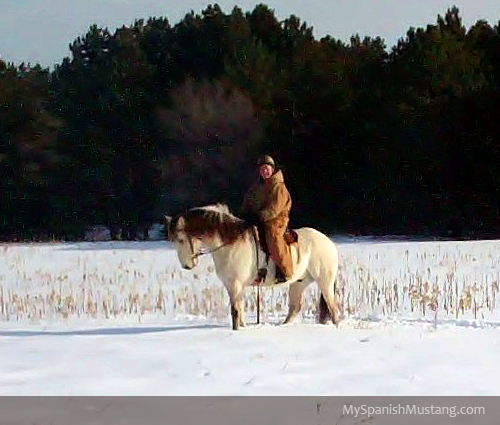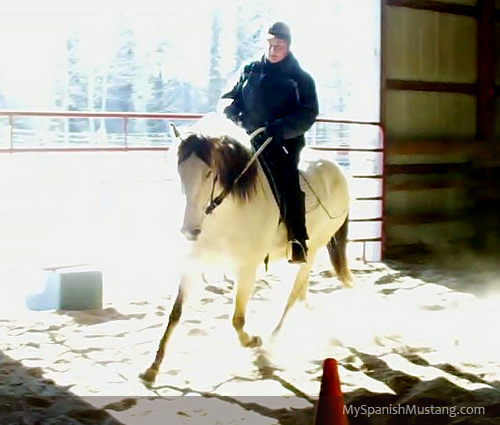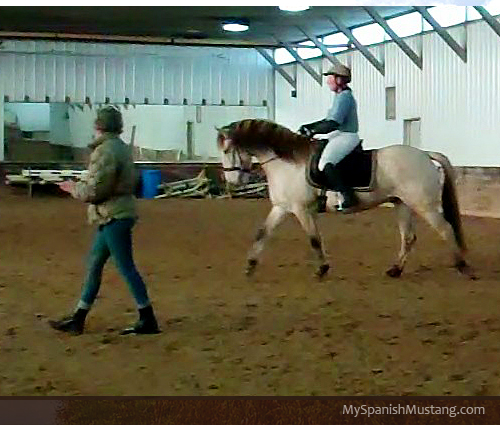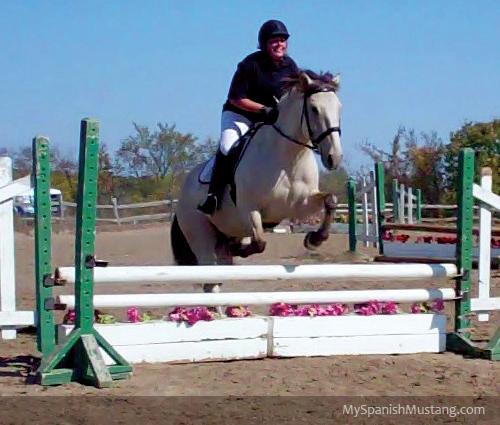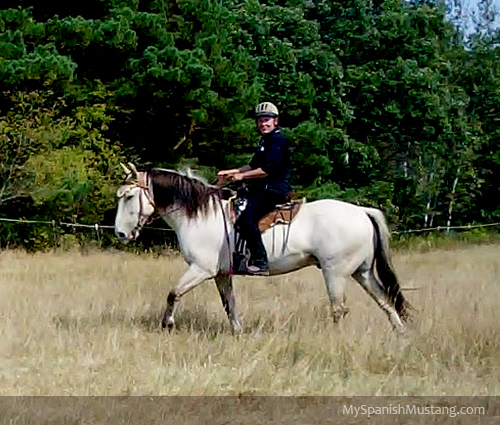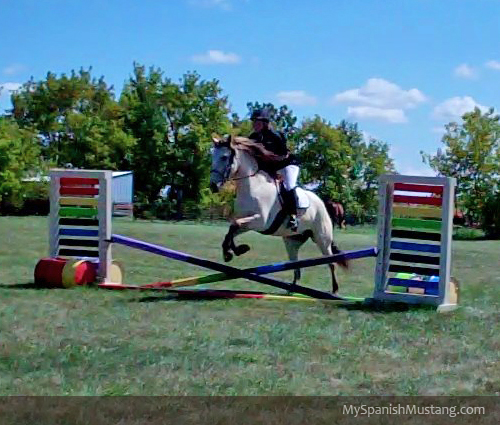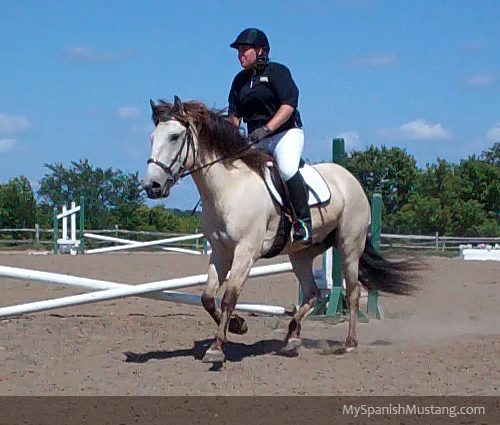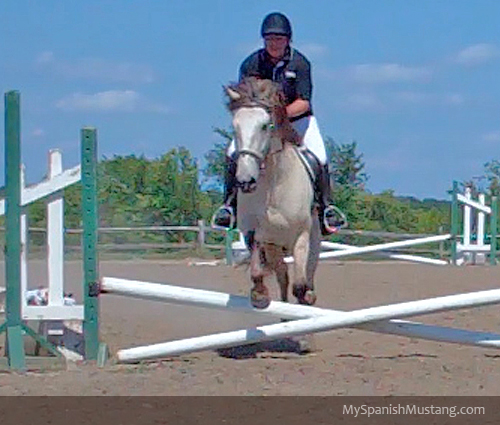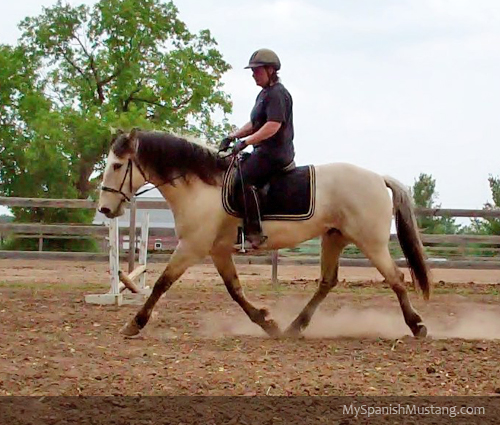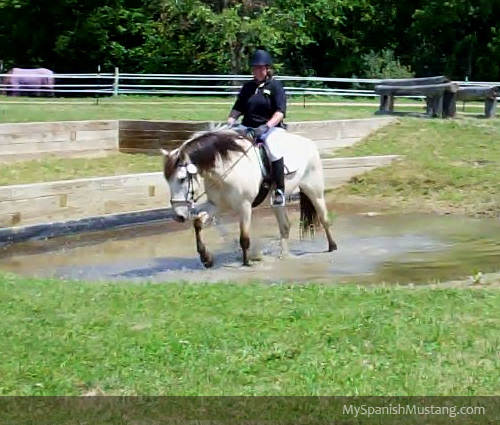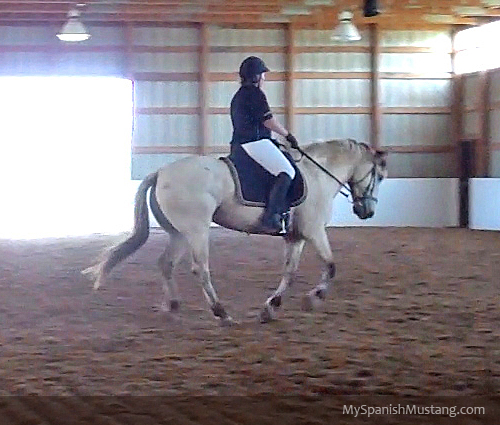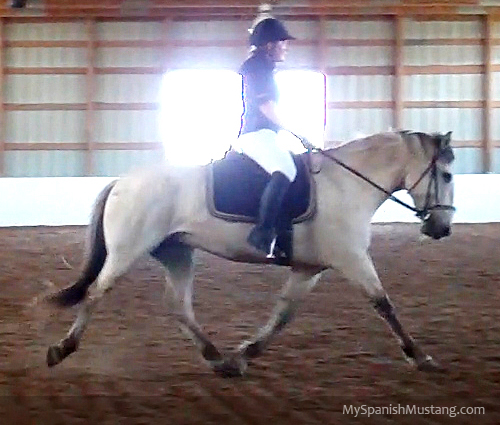By Jennifer Klitzke
Winter’s dark and cold envelops my world for up to six months each year. Along with it I’m plagued with a condition known as SAD (seasonal affective disorder) that lives up to its name. It is the body’s physical reaction to the lack of sunlight (vitamin D) and is very common in the North. Sadness, lack of energy, and a longing for warm, sunny and green are the main symptoms that I experience. There could be another reason for SAD. Winter’s dark and cold keeps me from what I love—riding my Spanish Mustang Indian’s Legend, SMR 3801 (aka, Indy).
Each morning on my way to the barn I mutter, “Dark and cold, dark and cold. Oh, how I hate dark and cold.” My husband said, “Jennifer, just find something fun to do and winter will be far more enjoyable.”
Hmmm, great idea! My two favorite pass times are riding horses and taking pictures of them. So this year instead of giving Indy the winter off, I discovered how much fun it is to ride in the snow! If it’s cold, I just add more layers. So far -5 degrees F led to my record of two pairs of pants, long johns, snowmobile overalls, two sweatshirts, two winter jackets, a pair of choppers, two hats and my riding helmet resulting in something that resembled the Michelin Man.
Riding trails during daylight or moonlight hours of winter is pristine. Winter’s quiet is met with crunching footsteps. The snow sparkles like crystals along the ground and fireflies dancing in the air. During daylight, the black and white landscape meets a backdrop of evergreen and blue sky, and at night a canopy of stars surrounds me.
After each ride I return home with a sense of awe and joy that replaces my once SAD expression. Plus photos captured along the way remind me of how much fun we actually had. (Not to forget the photos I’ve taken of Indy’s exuberance as he plays with his friends in the snow.)
So this show season, Indy and I will already be in shape by the time the last snowflake melts, which I hope is soon. After all, it is Spring! And as long as I take my vitamin D and a dose of Indy, SAD is cured.

